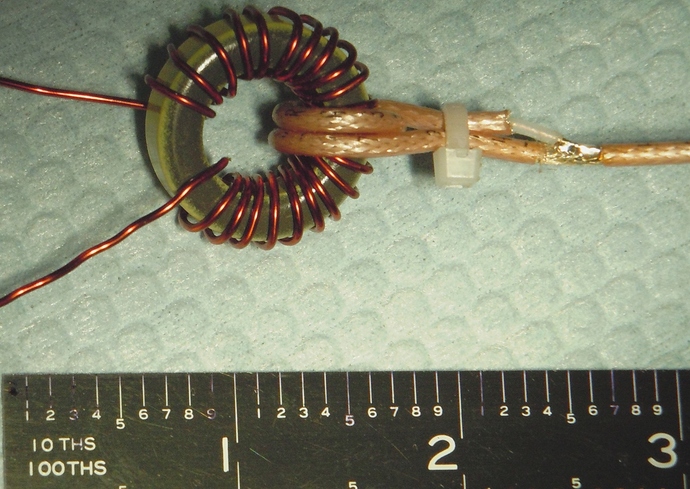Hi All,
The following was posted years ago, and is related; This also requires a counterpoise in actual use.
K6HPX
One thing to be considered, applicable to some of the simpler designs, is to use an N-turn Faraday shielded link instead of just N-turns. As many may know, this allows better isolation of the rig from the tuner / antenna, makes the antenna use the counterpoise instead of the rig, etc. see PIX: this is a 2-turn example, coax from the rig not connected to anything except by inductive coupling.
Best, Ken
